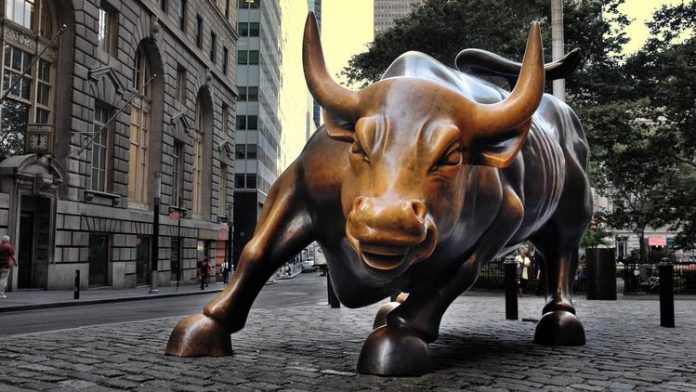Stocks opened lower today, taking a break from their recent (and rapid) ascent. The Dow, S&P, and Nasdaq Composite all fell slightly.
And though that might seem disappointing, it’s the kind of thing that usually happens after the S&P rises 4% in just 5 trading sessions. What’s more, it won’t be the end of the rally if stocks finish down this afternoon.
The market can’t go up unabated forever, after all. Eventually, there will be (usually small) pullbacks even in a runaway short-term rally like we just experienced.
Is today’s turbulence the first sign of trouble? It certainly could be, especially after the Dow notched a new record high in the trading session prior. But it also may be a small “hiccup” en route to even higher highs.
“The Dow traded to a new all-time high today, again showing the resilience of dip buyers and the importance of cyclical companies in the stock market rally,” said Independent Advisor Alliance’s Chris Zaccarelli yesterday.
Better-than-expected earnings have pitched stocks higher over the last week and a half. Of the 70 S&P 500 companies that reported earnings thus far, 86% beat analyst estimates. Tesla (NASDAQ: TSLA) joined that group last evening when it beat on both earnings per share ($1.86 reported vs. $1.59 expected) and revenue ($13.76 billion reported vs. $13.63 billion expected). The company saw its sales grow last quarter, too, which most other automakers couldn’t achieve amid semiconductor and supply chain constraints.
But in spite of the strong quarterly results, many investors remain concerned about inflation. The recent Consumer Price Index (CPI) and Producer Price Index (PPI) readings showed “stickier” price increases than most analysts had hoped for this late into the year. Margins for manufacturers slimmed as well, which should eventually show up in earnings for certain types of companies.
Deutsche Bank’s head of thematic research, Jim Reid, noted that margins still seem unchanged for the companies that have already reported.
“There are no signs of widespread erosions of margins at the moment,” Reid said.
“Perhaps there is so much money sloshing about that for now prices are broadly being passed on.”
That’s going to change when the Fed finally starts to taper its asset purchases. Wall Street believes the taper will actually begin sometime in November.
And if it does, that may signal the beginning of the end for the bull market. That’s not to say stocks will immediately streak lower when the taper is announced.
They probably won’t.
But in starting the taper, the Fed will get the ball rolling on a shift in monetary policy that culminates in 2022 with a series of rate hikes – the bigger hazard that some traders (of both the institutional and retail variety) already have their eyes on.
“Both the fiscal stimulus and monetary stimulus has been driving markets really since the ricochet off the bottom of COVID,” said Michael Vogelzang, chief investment officer for Captrust.
“What we’re looking at now is, the easy work is done. The Fed is beginning to taper shortly, we expect. And in order to progress here […] we’re going to have to see stronger earnings growth, and continued strong earnings growth.”
When rates rise and bond purchases fall, far less money will be “sloshing around” to boost prices. Which, over the last 17 months, has helped fuel the market’s epic post-Covid run-up right alongside consistently better-than-expected earnings seasons.








